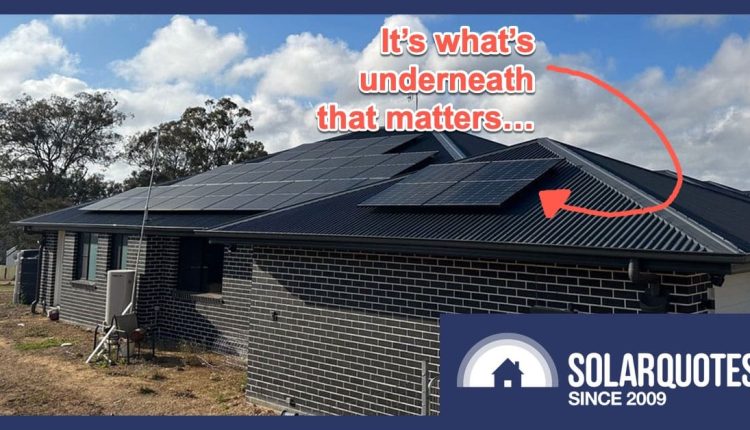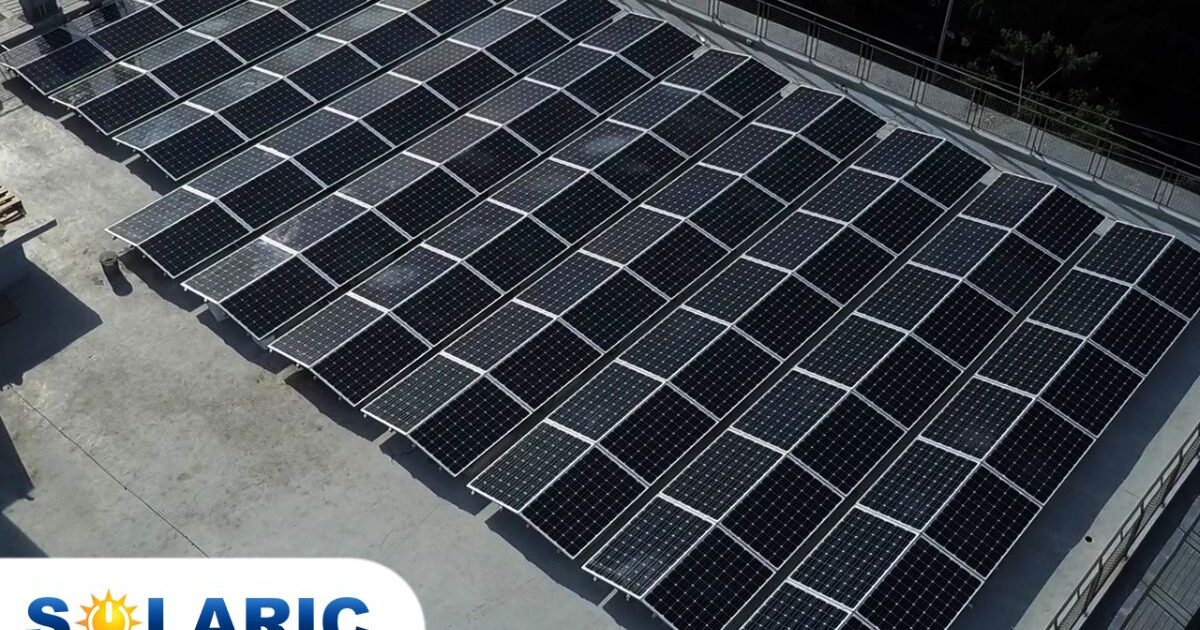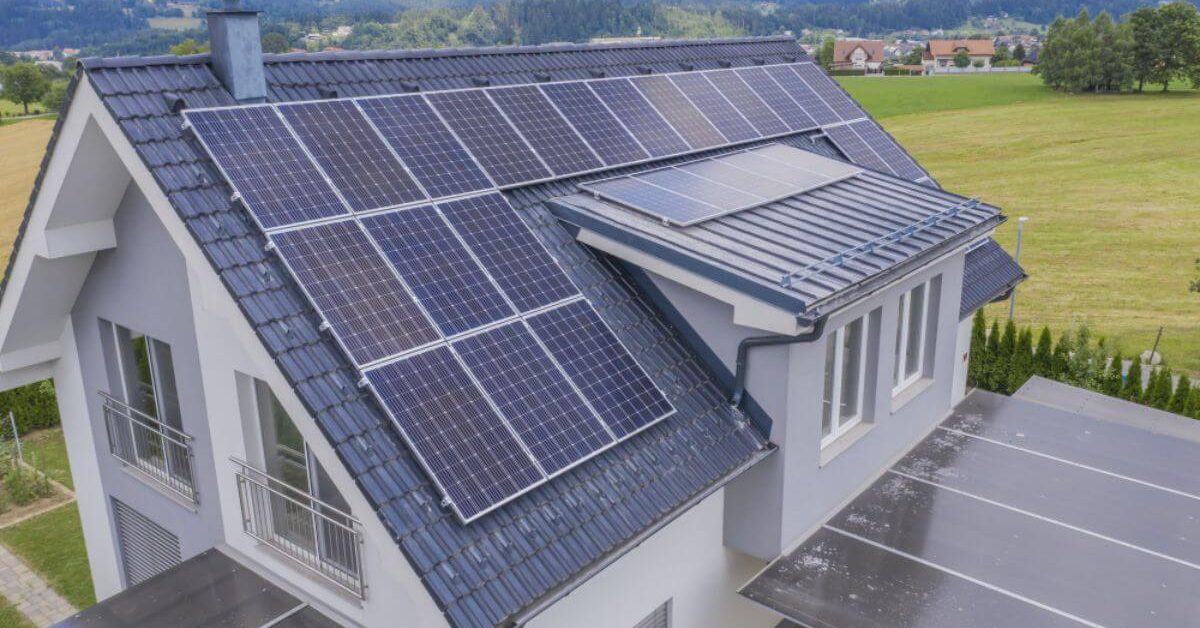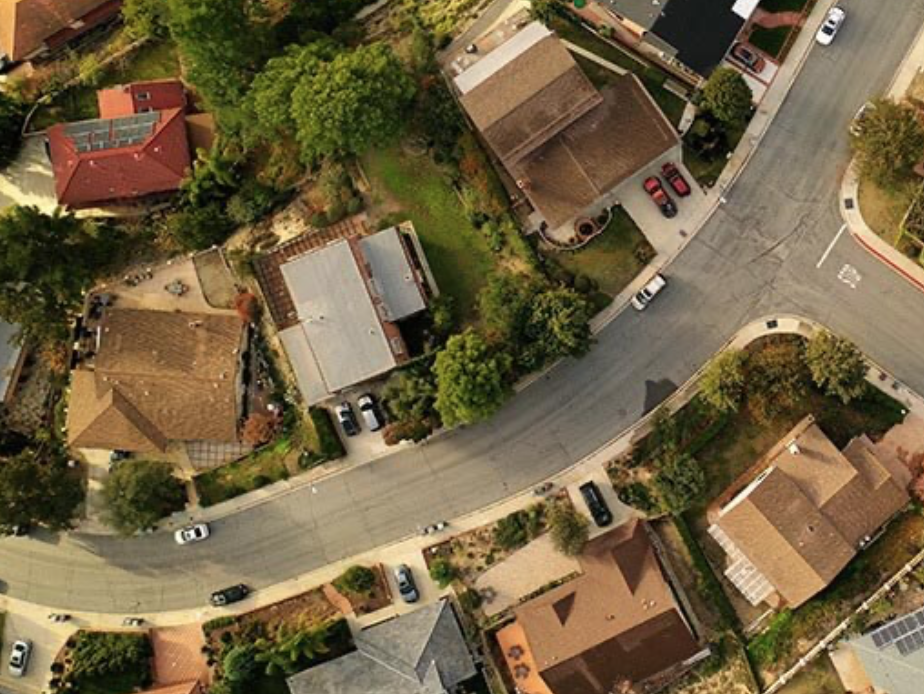The Unseen Craftsmanship of A Good Solar Install: Array Cabling
Did you know that a staggering 90% of solar installation defects are found on the roof?
Under the solar panels is where seasoned professionals distinguish themselves, installing systems with a priority on longevity and safety. The hidden solar panel array cabling, often overlooked, speaks volumes about the installer’s dedication—or lack thereof.
As a Licensed Electrical Inspector (LEI) I’ve learned that array cabling is the #1 predictor of an installation’s fate. By checking the array cabling, I can usually quickly tell whether I’m gonna to be inspecting a piece of craftsmanship or whether I will be onsite for the following 2 hours writing up defects.
With my Dunlop Volleys on the tiles and my zoomed in iPhone on the details, I ensure that the solar systems I inspect are safe, sound, and precisely installed. Because when it comes to solar, the true test of craftsmanship is not just what you can see from quick drone shot, but what holds up against the stormy weathers of time.
Here are 5 examples of array cabling which I see day to day. There are usually clues here as to the standard of the workmanship throughout the installation. Some key DOs & DON’Ts. You may notice that the problem images have multiple defects, this is typical of what I see out there.
#1: Running Array Cabling Behind Frame Nuts in Rail Channel
I observe this troubling shortcut way too frequently: installers running array cabling behind the frame nuts in the rail channel. On the same subject : array.
It’s a gamble that places undue stress on cables due to thermal expansion and risks damage from unaware future technicians.
It is also likely to damage the conductor’s insulation during installation as the insulation is stripped back on the edge of the array fixing nuts.
My advice? Steer clear of the rail channel. Secure cables externally with robust fixings like panel clips or cable ties.
Bad: Cable installed inside rail channel, damaged insulation during installation
Bad: Multiple cables run inside rail channel. It’s easy to see how this could become an issue down the track with expansion & contraction due to weather conditions or if someone turns the bolt in the vicinity.
Good: Cables installed external to the rail channel – good job.
#2: Running Cables on Catenary Wire
Using a catenary wire to fix array cabling conductors to can be a handy way to place cables where you want to when there is nothing else to fix them to. Read also : array. I have noticed it recently becoming quite popular.
I’ve crossed paths with installations where array cabling entwines catenary wire like ivy, lacking any formal anchorage. The completed wiring loom somewhat resembles spiral pasta. This practice raises red flags.
Dodgy installers defend it, expert installers just don’t go there. It’s not just about meeting the bare minimum of AS3000. It’s crucial for installers to ensure their catenary wires adhere to the latest standards, which, according to AS/NZS 5033:2021, mandate earthing unless the wires are insulated or do not make contact with DC conductors.
The best practice? Use cable ties to secure the conductors to the earthed catenary wire, creating a visually tidy and stable setup that leaves no room for doubt or debate.
Bad: Cables wrapped around the catenary wire in a spiral like manner, not securely fixed in position
Good: Catenary wire done right – nice work
#3: Pulling Cables from the Panels Tight and Under Strain
In solar installations, tension on conductors & connections is the enemy. On the same subject : I’ve Calculated CO2 Emissions From Solar Farm Land Clearing: It’s Bugger All.. As an LEI, I’ve witnessed the strain that overly taut cables exert on solar panel connections, risking damage to the delicate junction boxes and potentially voiding manufacturer’s warranties.
It’s a fine art, ensuring that each conductor from the modules is laid out with the requisite slack and supported just so, to ward off any strain and paying attention to the cable’s maximum bending radii. This is especially crucial at disconnection points and at the ends of rows—precision here is non-negotiable.
Installers who use unskilled or unlicensed labour for all their roof work may come unstuck here as this requires skill, expertise and cannot be successfully performed by a trained monkey.
Bad: Cables to modules pulled tight and under strain, likely to fail over time
Good: Cables from modules with a nice sweeping bend – great stuff
#4: Reliance of PVC Cable Ties
Navigating the unforgiving Australian sun, it’s clear that the common PVC cable ties are a false economy. They may initially save some cash, but under the relentless sun, they’re destined to fail, risking your entire solar system. I’ve also heard stories of broken PVC cable ties falling into gutters and blocking drains with disastrous consequences.
In my professional view, selecting stainless steel cable ties or sturdy clips is a smart move, offering durability against the brutal UV assault and temperature fluctuations. While PVC ties may be utilised to tidy up appearances, they shouldn’t ever bear the weight of securing your array conductors as the primary means.
And a word to the wise: when tightening steel ties, a gentle hand is key to avoiding insulation damage and potential earth faults – good installers already know this.
Bad: One PVC cable tie holding up the return cable, what happens when the tie becomes brittle and gives way?
Good: PVC cable ties being used as a secondary means of fixing to tidy up – they are still useful when used right
#5: Not Enough Fixing Points Causing Sagging and Unnecessary Movement in Windy Conditions
It’s still too common to see not enough fixing points holding the array cabling in position. When array cables sag a bit, it’s poor workmanship and may lead to unnecessary wear & tear on the conductors. When cables are in touching the roof surface, it can quickly become dangerous.
It’s worth noting that many years ago I saw an array conductor & MC4 connector which was never attached to the array and laying on a tin roof. I found the MC4 burnt out and the conductor now exposed and in contact with the roof surface. The roof sheets were live and I found myself having to deal with an unsafe installation.
Nesting of wildlife is not uncommon under arrays. This is not an ideal situation, although can cause further complications and harm when unsecured array conductors are involved.
My advice, spend a few extra moments and a few extra fixings securing conductors. Less hassle later, much safer now and it will look great. A small step which will pay off in the long run.
Bad: Return cable sagging, image what it would be doing in strong winds.
Good: Lovely array cabling – all secure & safe
Conclusion
It’s important to recognise that good array cabling is like the unsung hero of solar installs – it’s all about the details. It saves you from a heap of trouble down the road and keeps everything safe and reliable.
So, here’s to doing it right – slap on those clips, secure those cables, and let’s make sure our solar setups stay strong for the long haul, without any hiccups. Because who wants to climb back up on the roof and fix your stuff ups?






Comments are closed.